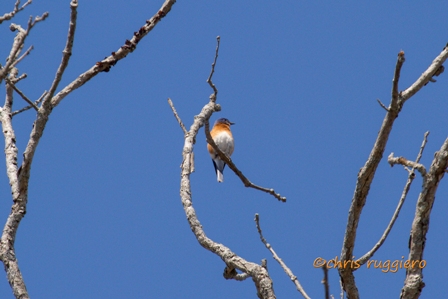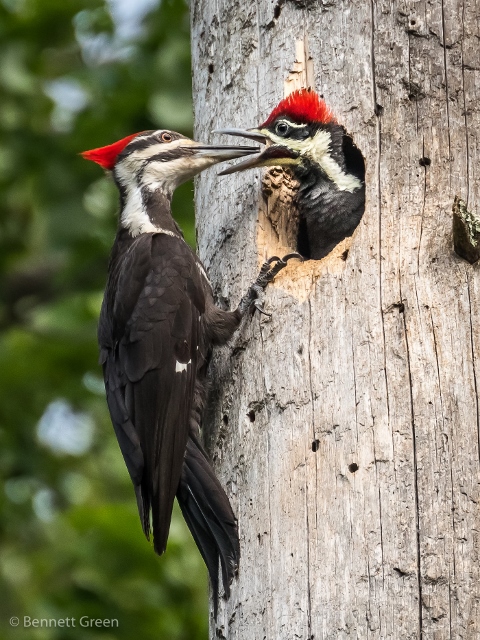Baby animals are everywhere, but sometimes hard to see. The doe will leave her spotted white-tailed deer fawn hidden in ferns while she goes off to feed. If you are very quiet you might hear a short snorting sound calling the baby to join her.
Baby birds, both in the nest and recently fledged, are often the same size as their parents. But there are differences. These young Pileated woodpeckers have dark colored eyes while the adults show yellow. Large babies may look like adults, but can be seen chasing their parents and begging for food by quivering their wings and calling with open bills. Parents will gradually feed them less and less as the young learn to find their own food. Still, visitors may hear pathetic calls from young birds hoping for one more “free” meal.
Eastern bluebirds have hatched in two of the 55 nest boxes at Broadmoor. The nine young were marked with aluminum bands to track them in the future. Three more bluebird nests now have eggs. Bluebirds are among the birds that will nest more than once during the summer if there is enough available food.
 See if you can identify a young bird recently out of the nest by its feather pattern, eye color or behavior.
See if you can identify a young bird recently out of the nest by its feather pattern, eye color or behavior.



